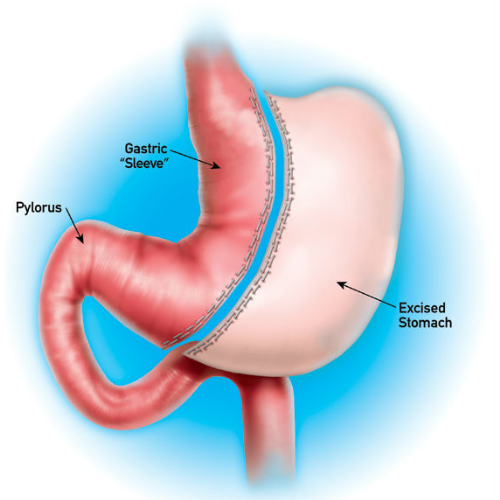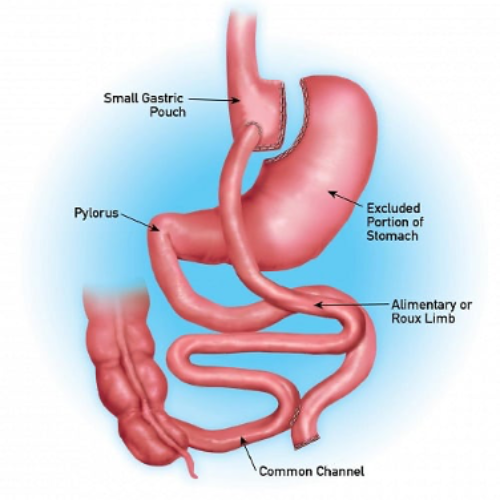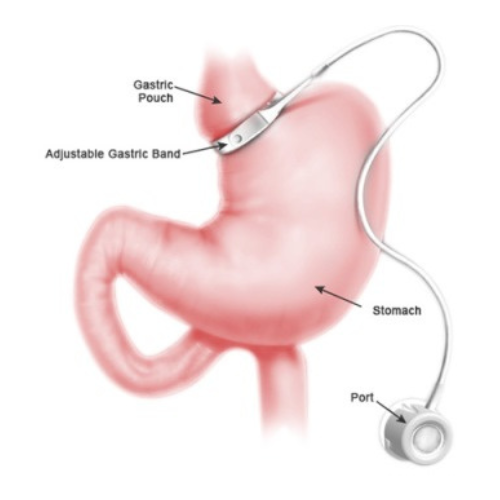Weight Loss Surgery Options at TMH
At Tallahassee Memorial, we offer patients the safest surgery options that have proven successes. Once you meet with our surgeons, they will discuss your options and their recommendation for which surgery to receive.
Gastric Sleeve Procedure

How does Gastric Sleeve Work?
During this procedure a thin, vertical sleeve of the stomach is created and the rest is removed. This procedure limits the amount of food you can eat and helps you feel full sooner. It allows for normal digestion and absorption. Food consumed passes through the digestive tract in the usual order allowing it to be fully absorbed in the body.
The majority of gastric sleeve procedures performed today are robot-assisted. Robot-assisted surgery is performed using small incisions, meaning a shorter hospital stay, faster recovery, smaller scars and less pain.
The length of time of the surgery varies but on average, operative time is 1.5-3.5 hours. The average hospital stay is 1-2 days and patients usually return to normal activities within 2 weeks.
Duodenal Switch Procedure
How does it work?
A gastric sleeve procedure can be the first step before gastric bypass, or it can be a single procedure for weight loss. If it is used as part of a two-step procedure, called a Duodenal Switch procedure, the first step is for your surgeon to create the small stomach "sleeve." After a period of time determined by your surgeon, another procedure would be done in which your surgeon attaches a section of the small intestine directly to the stomach pouch. This allows food to bypass a portion of the small intestine. This causes your body to absorb fewer calories and consume less food.
Studies show the duodenal switch procedure has been used successfully in patients with a body mass index greater than 50 or in high-risk patients. The length of time of the surgery varies but on average, operative time is 2-3.5 hours. The average hospital stay is 2-3 days and patients usually return to normal activities within 2 weeks.
Gastric Bypass Surgery
How Does Gastric Bypass Surgery Works?
Gastric bypass is a restrictive surgery technique that alters the digestive process. The surgery restricts food intake by creating a smaller stomach pouch and decreasing the amount of calories and nutrients the body absorbs. After surgery, food bypasses a large part of the stomach and most of the small intestine.
The Gastric Bypass Procedure
Gastric bypass surgery can be performed as a minimally invasive procedure, either with our da Vinci surgical system or laparoscopically. Robot-assisted surgery is performed using small incisions, meaning a shorter hospital stay, faster recovery, smaller scars and less pain.
During the procedure, your surgeon creates a small stomach pouch. Then a section of the small intestine is attached directly to the pouch. This causes food to bypass a portion of the small intestine, where calories and nutrients are absorbed. Having a smaller stomach pouch causes you to feel full sooner and eat less food. Gastric bypass patients report an early sense of fullness and satisfaction that reduces the desire to eat.
Typically, patients at TMH are discharged 1-2 days after their surgery and return to work after 2-3 weeks.
Bariatric Revision Surgery

If you’ve previously undergone bariatric surgery but have had complications resulting from it, we’re here to help. Our surgeons are experts in helping you feel better and reach your goals. Whether you’re experiencing gastroesophageal reflux disease (GERD), haven’t reached your weight loss goal or are having other issues, our team can help.
First, our medical team would run diagnostic tests to determine what the underlying cause of your issues are. Then, our surgeons would consult on your best course of action to have the best result.
